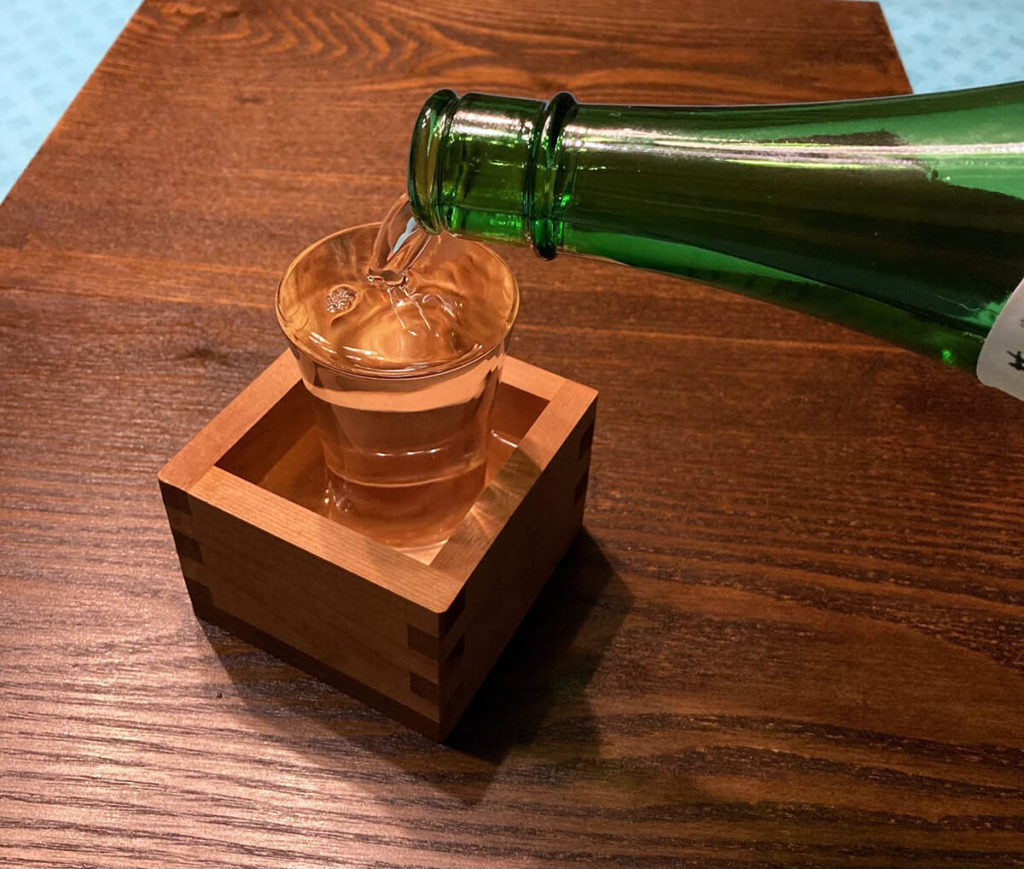Welcome to the wonderful Japanese sake (日本酒) world!! As you probably know, sake is the signature traditional Japanese alcohol beverage fermented from rice.
Sake is actually the generic name for a wide variety of similar beverages. It is divided into varieties of products depending on how much the rice for sake is milled or how long is spent making it.
Sake is a traditional Japanese beverage that has been enjoyed for a long time. Even though it’s been getting popular in the rest of the world in recent years, it is not yet well known what sake is or how to enjoy it. Here, I’d like to share some tips to drink and enjoy sake including the containers or cups you use when you drink it.
Nevertheless, I don’t think there need to be strict rules on how to drink or enjoy sake. The most important thing is to be happy while you’re having it! I believe wherever in the world you visit, you should drink alcohol with a lot of fun and without any concern. I would be happy if you would be relaxed and read this introduction to sake, and if that it would be a bit useful for you.
1. A brief classification of sake
As I start this introduction, I can’t go much further without mentioning some of the many kinds of sake. We have many kinds of sake such as honjozo (本醸造酒), junmai (純米酒), ginjo (吟醸酒), daiginjo (大吟醸酒), etc. The former two use low-milled rice and have a robust rice flavor. The latter two, on the other hand, are more highly milled. Therefore they have a richer aroma.
Each kind of sake has nama-zake, or raw sake which has not been pasteurized. It means that the fermentation is still undergoing in the bottle. Therefore, nana-zake needs to be preserved in the fridge. It tastes fresh and lively.
2. Mokkiri: A glass of sake in the wood container called masu
If you enter a Japanese-style bar, you can easily find this type of drinking menu. Mokkiri means “a glass of sake.” You can choose the sake you like from the menu. After you order it, the server brings the bottle of sake you choose from the fridge and pours it to the glass. Then they always deliberately make the sake overflow into the wood container (the “masu”) outside of the glass. They do this to show the good service and hospitality of the shop. It might be good to make a little surprised sound then. The more you are surprised, the more the server might overflow the sake although I can’t guarantee.
As mentioned above, since the sake is filled to the brim, you’d be better off bringing the glass and the masu to your mouth at the same time by holding the glass by one hand and the masu in the other and sipping a little when you drink it. If you drink more than half the glass of sake, you can add the extra sake in the masu to your glass. Of course, you could also drink the remaining sake directly from the masu after you drink up the sake in the glass.
Generally, the glass is not that big, about 100 ml or so. So you could enjoy other kinds of sake as much as you can. Just so you know, the sake which are served via mokkiri are mostly nama-zake, ginjo and daiginjo.

3. Tokkuri or Choshi; A unique shape of container specific for sake (you can call the container either tokkuri or choshi)
Depending on the spices of sake, they also offer this kind of serving style. The sake served by this style doesn’t need to be preserved in the fridge. This style is for all kinds of sake except for nama-zake. However, you might want to serve ginjo and daiginjo (rich aroma sake) in the mokkiri style discussed above because it is better to have them cooled. Therefore, the sake which is most commonly served in this style will be junmai or honjozo.
This is something that should be mentioned specially, but you can also enjoy “atsukan” (hot sake) served by tokkuri or choshi. On a cold winter night, we sake lovers feel like drinking atsukan, which warms you from the inside out. I bet drinking atsukan while eating hot pot would definitely hit the spot. The sake which fits for astukan is junmai or honjozo.
Tokkuri and choshi are usually made of a traditional Japanese earthenware. You can enjoy not only the sake while using these vessels while also appreciating their appearance and touch. The same applies to other things in Japanese culture: washoku, sado, tea ceremony, kado, flower arrangement, and so forth. Each of these things has different kinds of containers which can be appreciated and enjoyed in different ways.

4. Ochoko or Guinomi; A small cup for drinking sake
Wherever you go in the world, you definitely need a cup when you drink alcohol. Ochoko or guinomi is always accompanied with tokkuri or choshi. There is no set definition, but we might tend to call the bigger one “guinomi.” Almost all of them are also earthenware. Let’s say you were at a Japanese style bar with your Japanese friend. Using an ochoko, you’d drink it up quickly because it’s small. Then, your friend would notice that there was no sake left in your cup and pour some from the tokkuri.
If the sake in your friend’s cup started to run low, then it’d be your turn to pour some to your friend’s cup. Thus, the drinking style using tokkuri and ochoko encourages you to consider each other, which might be one of the characteristics of Japanese culture. What if your friend didn’t notice that your cup got empty? Then you might want to say, “How about some more?” to your friend holding the tokkuri. If you did that, your friend could not help but notice that your cup was empty regardless of whether or not he wanted to have more. It seems like a little bit of a hassle, but this is a unique Japanese style

5. How beautiful the containers for drinking sake are!!
As mentioned above, both the pitcher (tokkuri) and the cup (ochoko) are almost all made of earthenware and also so worth admiring. However other than that, there are various materials of pitchers and cups such as made of glass like Edokiriko or Tsugaru Vidro, or a lacquerware called katakuchi and so forth. There are some gimmicky pitchers you can use to keep sake cold by putting some pieces of ice in it.

Drinking sake admiring cherry blossoms in spring, if a petal fluttered down into the cup, it would be seen as elegant. The cold sake with blueish glass on summer evening – it’d bring you refreshment. In Autumn, if a beautiful moon is reflected on the sake in the cup, it’d be romantic. When snow falls silently on a cold winter night, some hot sake would warm your body and heart. Since ancient times, Japanese people have been enjoying sake with the changing of the seasons and nature. As seasons always change, drinking styles and the containers also have a kind of diversity and change as well as sake itself.
I do hope you would enjoy Japanese sake from the bottom of the heart.
A sake lover who lives in Sendai city. The president of a certain neurosurgical clinic. His five children all left home and now he lives with his wife, his parents and a cat. He loves running, swimming, skiing, gardening, and tap dancing as well as drinking.





 HTJ has a YouTube page! Check it out
HTJ has a YouTube page! Check it out